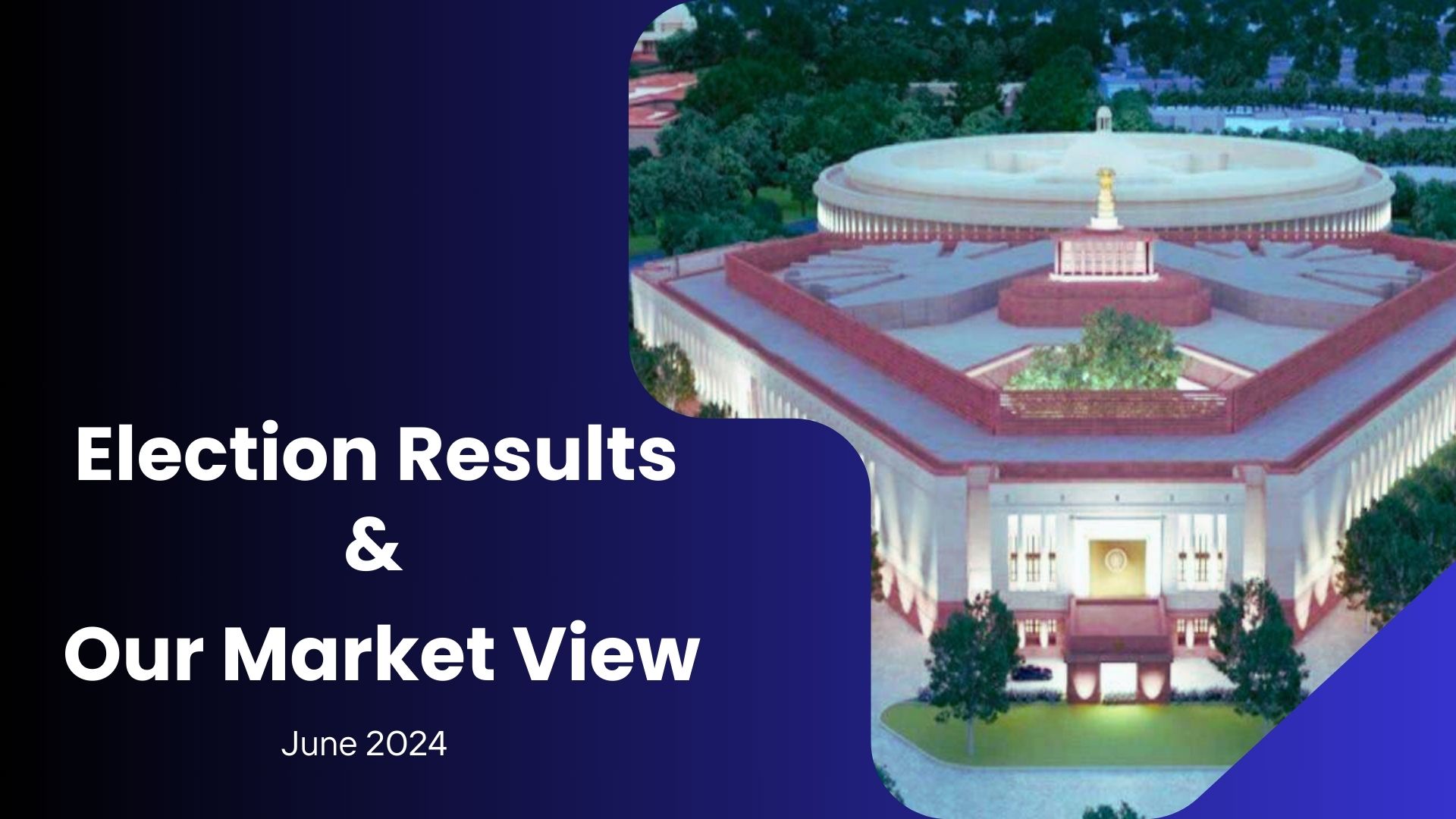Election results have been interesting with NDA getting less than 300 seats and BJP falling 30 short of the absolute majority. The results were so surprising that the losers celebrated more than the winners. Mr. Modi for the first time has to lead a coalition government with the active support of regional parties, which will be a new experience. Experts believe he will be good, citing his successful experience in international diplomacy.
The markets reacted in a huge negative manner with Sensex and Nifty 50 plunging by 7%. The move was further exacerbated by the wrong exit polls resulting in a big positive move on Monday, June 3, a day before the election results. There was tremendous selling in the so-called Modi stocks including PSU, defence, capex, manufacturing, and Adani group stocks.
The markets will be watching closely the future developments. NDA with its majority is highly likely to form the new government with Mr. Modi at the helm. Both important coalition partners – TDP & JDU have stated their firm intention to support NDA. The next step will be to see the composition of the union cabinet and the influence of 2 Ns – Naidu & Nitish. This will be followed by the union budget, the first major statement on its economic policy. The priorities are likely to remain the same with a continued focus on capital expenditure, infrastructure development, manufacturing, defence, and railways. However, there could be additional spending on rural areas. Additionally, the States of Andhra Pradesh and Bihar might get special status. The government is likely to retain its highly responsible fiscal stance and the recent RBI payout will be beneficial.
The new government is starting with an Indian economy that has solid foundations. Balance sheets are good, business confidence is high, and fundamentals are in good shape. There is high growth amid low inflation and twin deficits are in good shape. The economy grew by 8% in FY 24 and is likely to sustain its growth momentum for the next few years. However, it faces many challenges too with creating jobs being a major one. Low farm productivity and slow global value integration present further tests. A lack of centre and state coordination is impeding the implementation of the next leg of reforms. Paradoxically, the necessity of mediation and consensus in a coalition government could serve to improve this coordination.
Overall, once the dust has settled down, the powerful narrative of political and economic continuity will assert itself. The Indian market should regain its attractiveness and in the long term should continue to do well, though the markets might consolidate for a few weeks and might be in a wait-and-watch period. The markets will also continue to be supported by a substantial monthly inflow of Rs 20000 crores from SIPs.
Therefore, for the medium-term goals (anything above 3 years), allocation to equities should remain on the higher side. Fresh money could be invested in tranches, utilizing the STP route – systematic transfer plan. Equity mutual fund schemes remain the preferred way to express interest in stocks, because of the broad-based market and rapid rotation across sectors and caps. Consequently, selected schemes should belong to categories, which allow easy movement from one cap to another, and a few examples are Large & Midcap, Multicap, Flexicap, and Focus. Also, fund managers who identify the right sectors quickly should be selected, one helpful pointer is the percentage of schemes managed by them, which are in the top quartile during the last 2 years.
Also, as always, with the global and local uncertainty, some part of the portfolio should always be invested in high-quality short-term debt funds to take care of liquidity and any contingencies. Similarly, for short-term goals, equities because of their volatile nature, should not be deployed. Equity savings schemes, balanced advantage schemes, because of their hybrid nature, or multi-asset funds may be utilized for goals with a time horizon of 2-3 years. An additional advantage of these schemes over traditional bank deposits is the much lower equity taxation which these schemes enjoy. Portfolio construction should be sequential in the order of liquidity, safety, and yield-enhancing components.






